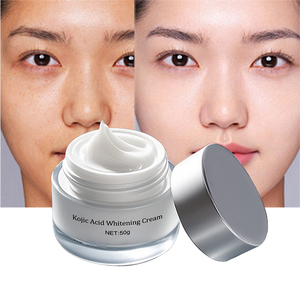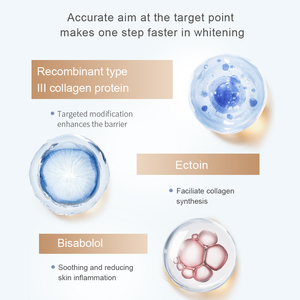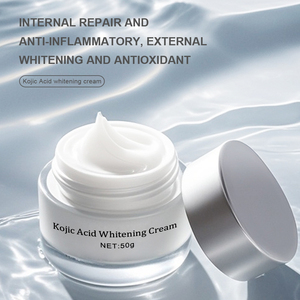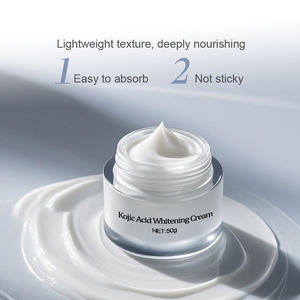
All categories
Featured selections
Trade Assurance
Buyer Central
Help Center
Get the app
Become a supplier

(1980 products available)







































Cosmetic Zinc Oxide comes in diverse types meant for assorted uses and formulations. The following are common types:
Micronized Zinc Oxide
Micronized zinc oxide is a zinc oxide powder, finely ground to achieve microscopic particle size. This zinc oxide for face is highly valued in cosmetics due to its superior skin penetration and smooth application. It is principally used in sunscreens and facial creams where a transparent finish is sought, in contrast to conventional zinc oxide, which is much larger and more opaque.
Nano Zinc Oxide
Nano zinc oxide incorporates zinc oxide particles sized at the nanoscale. This minimizes its reflection and offers improved light absorption, therefore, gaining a prominent place in advanced sunscreen formulations. While the cosmetic zinc oxide nanoparticles raise efficacy by promoting a nearly invisible application on the skin, their safety for skin and environmental health is still under scientific exploration and debate.
Non-Micronized Zinc Oxide
The non-micronized variety is zinc oxide powder without prior micronization. It typically possesses larger particles than micronized and nano forms. While this variant is not as smooth in texture or as transparent in formulations, it is widely used as a broad-spectrum UV filter in sunscreens, cosmetic products, and skin care because of its effective blocking ability. It is deemed more natural and safe compared to micronized and nano forms.
Coated Zinc Oxide
Coated zinc oxide comprises zinc oxide particles with a surfactant or polymer-based coating. The coating improves particle dispersion and reduces agglomeration. It is highly favored in sunscreen and mineral makeup formulations. The coating enhances stability and reduces the tendency of zinc oxide to clump together; hence, it provides a smoother, silkier finish.
Cosmetic products with zinc oxide comprise diverse key ingredients that enhance skin benefits and product performance. Some key ingredients include:
Vitamin E
Vitamin E, a high-value ingredient in cosmetic zinc oxide formulations, acts as a potent antioxidant. It counters free radicals caused by environmental stressors, such as pollution and UV rays, that cause premature aging.
Its natural skin-conditioning properties help to moisturize and nourish the skin, making it softer and more supple. Additionally, it helps enhance the stability of products, increasing their shelf life by preventing oils from going rancid. This winning combination of zinc oxide and vitamin E promotes healthy, youthful-looking skin and is ideal for anti-aging and daily use skincare.
Hyaluronic Acid
Hyaluronic acid is a staple in cosmetic formulations and is prized for its extraordinary water-retaining capabilities that create a moisture reservoir on the skin. This leads to plump, fresh skin that appears youthful and dewy. When paired with zinc oxide, which offers broad-spectrum UV protection, the two ingredients create a potent formula that safeguards against sun damage while continually hydrating the skin.
The deeply hydrating nature of hyaluronic acid mitigates zinc oxide’s typical drying effect, thus making this blend suitable for all skin types. This combination is greatly sought after in sunscreens, moisturizers, and makeup products.
Aloe Vera
Aloe vera gel possesses natural soothing and moisturizing properties that offer relief to sunburnt or irritated skin. It promotes healing, reduces redness, and aids in skin cell regeneration. When paired with zinc oxide in sunscreen and other skincare products, the two ingredients work together to provide powerful sun protection and hydration.
Aloe vera mitigates the typical drying effects of zinc oxide, ensuring a more comfortable application that leaves the skin feeling cool and hydrated.
Jojoba Oil
Jojoba oil is a natural waxy ester that closely mimics skin’s natural sebum, making it ideal for all skin types. It helps balance oil production, leaving skin neither too greasy nor too dry. Rich in antioxidants, jojoba oil helps skin combat free radicals and signs of aging. Its smooth texture blends easily with other ingredients, enhancing the overall product formulation.
The zinc oxide for skin comes with numerous benefits. It serves as a broad-spectrum physical sunscreen that reflects and scatters UV rays, protecting skin from sun damage, premature aging, and skin cancers. It also soothes irritated skin, calms conditions like rosacea and eczema, and helps in the repair of sunburnt skin. With its combination of protective and healing properties, zinc oxide is a skin savior when paired with nourishing oils.
Cosmetic zinc oxide, a versatile ingredient, finds diverse applications in skincare and makeup products. Here are some common uses:
As a Sunscreen
Cosmetic zinc oxide powder is frequently used in sunscreen formulations to provide broad-spectrum sun protection. It acts as a physical sunscreen by reflecting and scattering harmful UVA and UVB rays.
Mineral sunscreens with zinc oxide are ideal for sensitive skin because they rarely cause irritation or allergic reactions. In contrast to chemical sunscreens, which usually require frequent application, zinc oxide-based ones remain effective even after water exposure or sweating, making them ideal for outdoor activities. Zinc oxide sits atop the skin rather than penetrating it, thus providing a safer option for sun protection.
In Mineral Makeup
Cosmetic zinc oxide is a staple ingredient in mineral foundations, powders, and concealers. Its ability to blur imperfections gives skin a smooth, polished look. Zinc oxide's natural oil absorption keeps makeup in place all day on oily skin by minimizing shine and reducing frequent touch-ups.
In addition, it acts as a skin soother, helping to calm irritation and redness. This makes it ideal for those with sensitive or acne-prone skin. Zinc oxide's sun-blocking capability provides extra protection against UV rays in makeup, enhancing overall skin health and appearance.
Treatment for Acne and Other Skin Conditions
Cosmetic zinc oxide is a common inclusion in acne treatments and other skin condition products. Its antibacterial properties help to unclog pores and reduce inflammation, promoting clearer skin. Zinc oxide also aids in the regulation of sebum production with an aim to minimize excess oil that causes breakouts.
Beyond treatment, it hastens healing by soothing irritated skin and supporting tissue repair. Additionally, its calming effect reduces redness and irritation, which provides relief for those with rosacea or eczema. Due to all these benefits, acne treatment sets often come with products that contain zinc oxide.
In Diaper Rash Creams
Cosmetic zinc oxide is widely used in diaper rash creams for babies. It has a protective function by forming a barrier on the skin to prevent moisture and irritants from causing harm. This zinc oxide barrier protects the baby's delicate skin from urine, feces, and other environmental irritants, thus helping to prevent and heal diaper rash.
In addition to preventing irritation, zinc oxide's soothing and healing properties work to calm inflamed skin and promote faster recovery from diaper rash. Many zinc oxide creams meant for infants are formulated with gentle, safe ingredients designed for babies' sensitive skin.
Cosmetic Zinc Oxide incorporates numerous key benefits that promote skin health and enhance product performance. Here are some include:
Broad-Spectrum Sun Protection
Cosmetic zinc oxide powder is a physical sunscreen, providing broad-spectrum protection against UVA and UVB rays. It reflects and scatters the sun's harmful rays from the skin, preventing sunburn, premature aging, and skin cancer. Unlike chemical sunscreens, which absorb UV radiation, zinc oxide sits atop the skin and offers immediate protection upon application.
This makes it a favored choice for sensitive skin, as it rarely causes irritation or allergic reactions. Its stable nature under sunlight and heat means it remains effective even in harsh conditions. This makes it a reliable and protective mineral for outdoor activities.
Soothing and Healing Properties
Zinc oxide possesses potent anti-inflammatory properties that soothe irritated and sensitive skin. It is particularly beneficial for those with rosacea, eczema, or other skin irritations. Zinc oxide helps to calm redness and irritation.
It also promotes tissue repair and accelerates the healing of wounds and sunburn. This makes it a common ingredient in zinc oxide creams. Its skin-healing properties make it ideal for post-sun exposure treatment. This way, it helps to restore the skin's natural barrier and supports overall skin health.
Oil Control and Acne Treatment
Cosmetic zinc oxide efficiently absorbs excess sebum from the skin, balancing oil production and minimizing shine. This makes it valuable in acne treatments and oil-control cosmetics. By reducing excess oil, zinc oxide unclogs pores to prevent breakouts. It helps to heal existing acne faster by reducing inflammation and infection.
Additionally, it helps to regulate skin's natural oil production; hence, it helps in future breakouts. Its matte finish also makes it ideal for oily and acne-prone skin, providing a smooth base for makeup that lasts throughout the day without excess shine.
Non-Irritating for Sensitive Skin
Cosmetic zinc oxide is generally non-irritating and hypoallergenic. It makes it suitable for all skin types, including very sensitive skin. Unlike chemical sunscreens that often cause irritation, redness, and allergic reactions, zinc oxide sits atop the skin's surface and rarely penetrates the skin.
This makes it a gentler option for those with reactive skin or conditions like rosacea and eczema. It provides soothing relief and protection without causing irritation. Its gentle nature also makes it suitable for babies and those with post-procedure skin in need of a calming, protective barrier.
Storing and maintaining cosmetic zinc oxide products properly protects their effectiveness and extends their lifespan. Some storage and maintenance tips include:
Store in a Cool, Dry Place
Keep products with zinc oxide in a cool, dry environment, away from direct sunlight and excessive heat. Exposure to sunlight can degrade the active ingredients, reducing their effectiveness. Ideally, zinc oxide preparations should be stored at room temperature, between 20°C to 25°C (68°F to 77°F).
Use Airtight Containers
Store zinc oxide products in airtight containers to prevent contamination and keep them from drying out. This helps maintain product integrity and prevents the growth of bacteria or mold. For products like zinc oxide sunscreen or creams, use tubes or jars with a tight seal.
Keep Away from Moisture
Moisture can negatively affect the quality of zinc oxide cosmetics, especially in powder formulations. It may cause clumping, mold, or degradation of the product. Store these products in a dry environment and avoid using wet hands when retrieving them.
Refrigeration
For certain zinc oxide products, such as creams or gels, refrigeration can enhance their shelf life and provide a cooling effect on the skin. However, ensure the product is securely sealed before placing it in the refrigerator to prevent absorption of odors.
Regularly Check Expiration Dates
Always keep track of the product expiration date. Using zinc oxide products beyond their expiration date may cause reduced effectiveness and potential irritation. Most cosmetic products have a recommended shelf life of 6 to 12 months after opening, depending on the formulation.
Minimal Exposure to Air
Protect the product from prolonged exposure to air, particularly for creams and lotions. Air exposure could result in oxidation, which may deplete beneficial ingredients. Use spatulas for larger containers or ensure the product is re-sealed immediately after each use.
A1: Zinc oxide is used in cosmetics to provide broad-spectrum sun protection, especially in mineral sunscreens. It soothes and heals irritated skin, blurs imperfections in makeup, absorbs excess oil, and treats acne while promoting faster healing of damage and supporting overall skin health.
A2: Zinc oxide is safe for daily use and is an ideal option for sensitive skin. It is a mineral sunscreen that offers effective broad-spectrum protection against UVA and UVB rays without causing irritation. It is non-comedogenic, does not clog pores, and is gentle enough for rosacea-prone skin.
A3: Zinc oxide’s disadvantages include leaving a white cast on the skin, a tendency to be drying to some skin types, and an often gritty or thick texture. It can also be heavy and less aesthetically pleasing compared to chemical sunscreens, requiring thorough application and blending to achieve even coverage.
A4: Zinc oxide helps with dark spots by protecting the skin from sun exposure. This is because prolonged sun exposure can worsen hyperpigmentation and dark spots. Zinc oxide is effective at blocking both UVA and UVB rays. It helps to prevent further darkening and allows existing spots to fade over time. Additionally, its soothing properties promote healing and help balance skin tone.